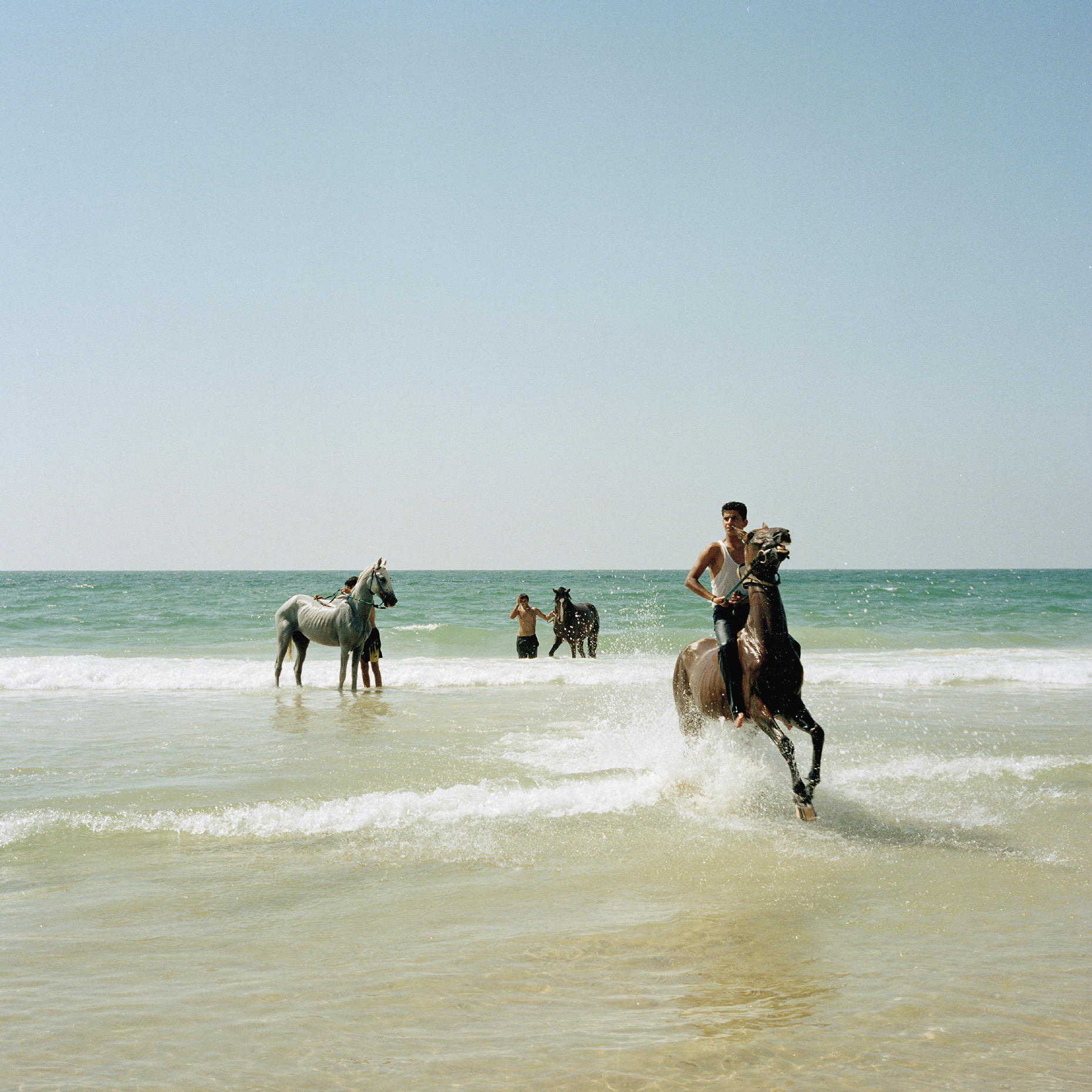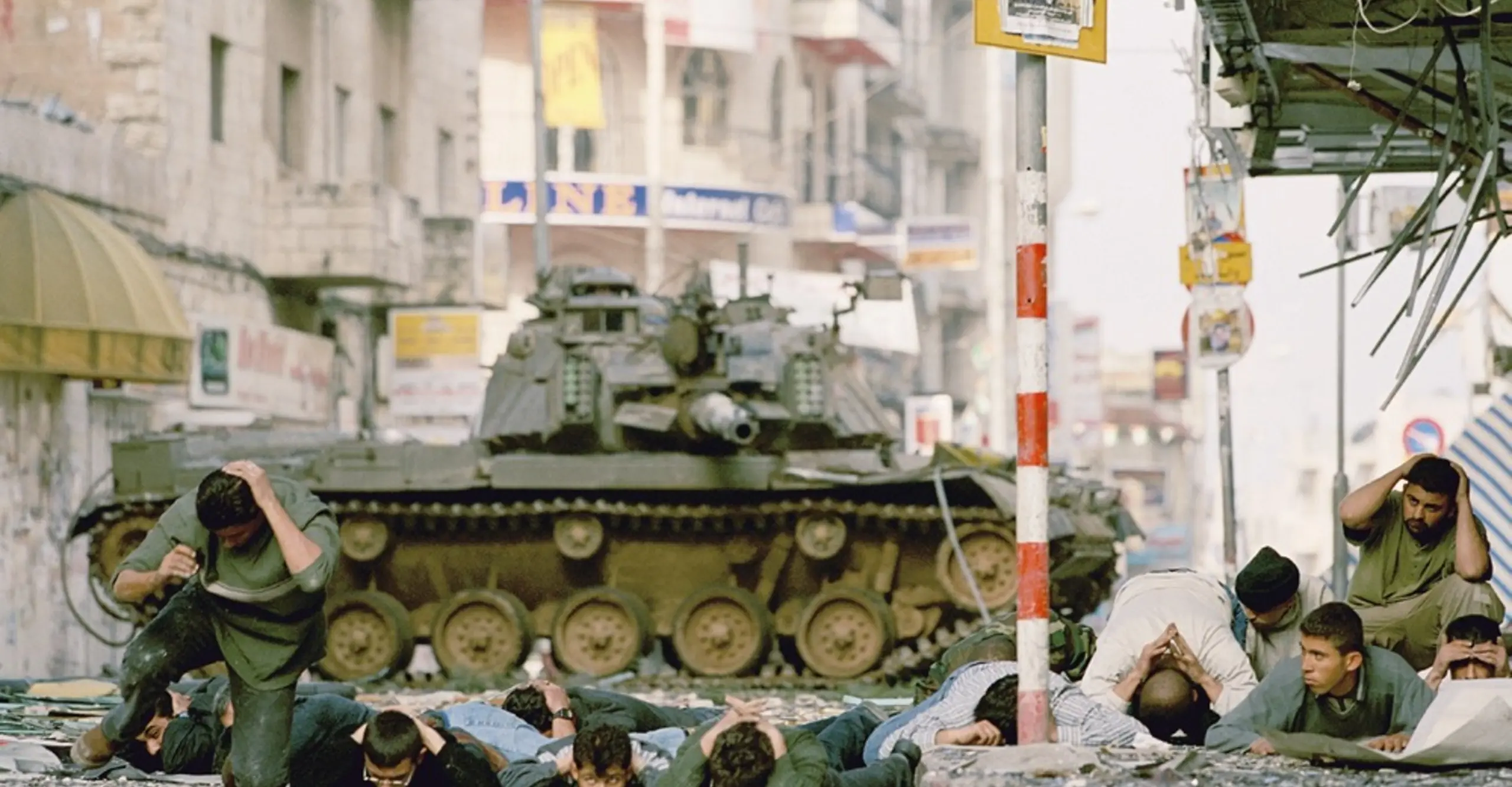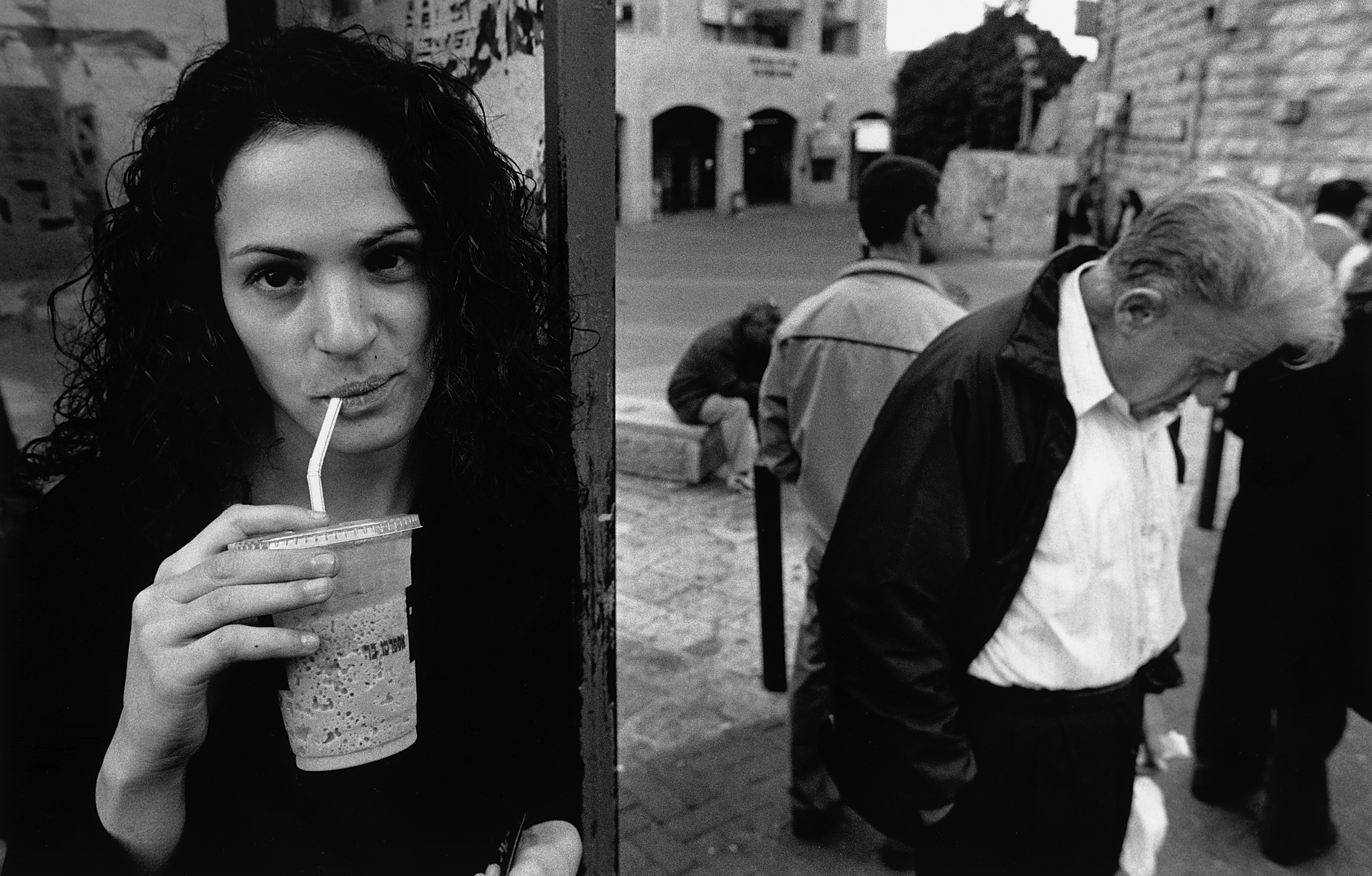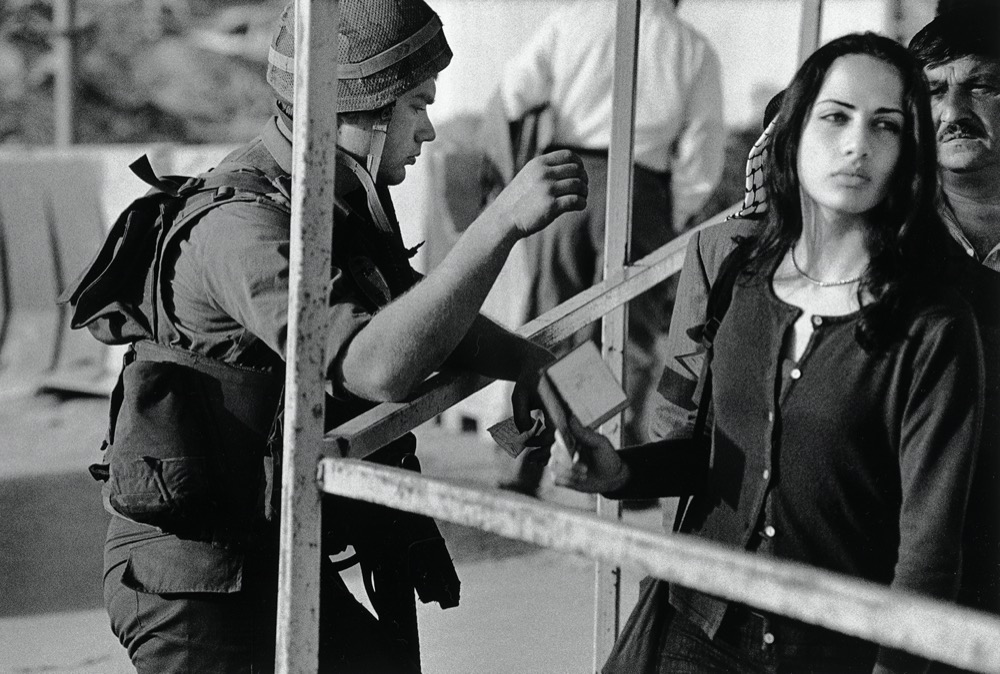Since the invention of photography in the 19th century, conflict and war have been amongst its greatest themes. From Robert Capa's pictures taken on the Normandy beach landings during D-Day in 1944, to Don McCullin's 1968 photograph of a shell-shocked U.S. marine in Vietnam, photographers have risked their lives to send home images of monumental and horrific events happening around the world. In Confronting Views nine photographers, all of whom come from a reportage background, employ different stylistic approaches to convey their experience of the Israeli-Palestinian situation.
Henrik Saxgren and Antoine d'Agata have chosen to document the scars that sustained military incursions have left on the urban environment. Saxgren has made a series of large black and white photographs in Gaza entitled Landscapes of War, which are noticeably devoid of human presence. D'Agata's series Palestine comprises composite panoramic shots of piles of rubble that were once family homes, whereas in Jerusalem he records the tension on the streets with images of violent skirmishes and gesticulating crowds. Larry Towell captures Palestinian youths taking up the cause by holding guns and throwing stones. David Sauveur has produced two very distinct bodies of work; one that documents Israeli military actions and emotionally charged Palestinian funerals; the other more poetic images of religious life and the architectural landmarks of Jerusalem.

In April 2002 Paolo Pellegrin was allowed to accompany the Israeli élite army on a night mission. His harrowing shots convey the fear and tension these raids instil amongst the civilian population. Bruno Stevens depicts the human cost of the conflict in his images of victims carried away in body bags and his portraits of dead civilians, from both sides of the dispute. The images of Didier Ben Loulou are more symbolic and abstract, showing graffiti-covered walls and knives placed on mutilated hands. Some of the photographers select not to show evidence of violence at all but to focus on how everyday life in the region continues against adversity. Dinu Mendrea, who now lives in Israel, has spent two years making his photo essay, Twenty in Jerusalem, of young people in the city. Harry Cock states: "The image of this region that sticks in our minds is one of violence and suffering. Yet ordinary life goes on". In his colour images we see children playing football on the streets, people working in factories and idyllic beach scenes with youths riding horses by the sea.
Today, as boundaries between photographic fact and digital fiction, and authors' intent and viewers' interpretation are becoming increasingly blurred, photography's role in documenting disputes has become evermore problematic. The Israeli-Palestinian situation is an inevitably divisive and difficult subject for a photographer to contend with. This exhibition offers no single set position on the discord, nor does it suggest a comfortable role for the photographer within it. Instead it offers a timely insight into the role and different approaches that photographers can have in conflict zones today.
Including work by Antoine d'Agata (France), Didier Ben LouLou (Israel), Harry Cock (The Netherlands), Dinu Mendrea (Israel), Paolo Pellegrin (Italy), David Sauveur (France), Henrik Saxgren (Denmark), Bruno Stevens (Belgium), Larry Towell (Canada).
This exhibition is a touring show organised by Stichting Fotografie Nooderlicht in The Netherlands. Curated by Camilla Jackson.
For further information on this and past exhibitions, visit our Archive and Study Room.



